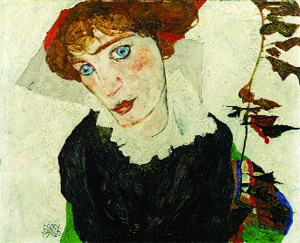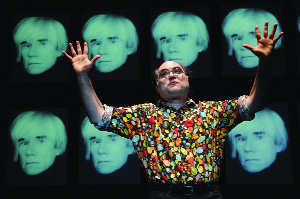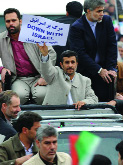Arts
Brief Reviews: What to Watch, See and Visit
FILMS

Orchestra of Exiles
Today, the Israel Philharmonic Orchestra is considered one of the world’s finest, but in 1936, the idea of forming a world-class ensemble in a largely barren land, with a Jewish population of 400,000, seemed preposterous. The man responsible for realizing the dream was the great Polish violinist Bronislaw Huberman, who created a refuge for Jewish musicians fleeing Nazi Germany. Documentary filmmaker Josh Aronson skillfully weaves together the many strands of Huberman’s struggle. Aronson Film Associates (www.firstrunfeatures.com). —Tom Tugend
Hava Nagila
Roberta Grossman’s hilarious cultural history of the song most closely associated with Jews—at least in the United States—tells its “long, strange story from Ukraine to YouTube.” Originating as a niggun (a wordless Hasidic musical prayer) in the shtetl of Sadagora, the melody acquired lyrics in Israel, where it became a rallying song for the new state, then an accompaniment for postwar suburban Jewish American life. With appearances by Harry Belafonte, Connie Francis, Glen Campbell, Leonard Nimoy and Regina Spektor (among others), all of whom have performed “Hava Nagila,” the film celebrates the song loved by many and hated by some. Katahdin Productions(www.havanagilamovie.com). —Renata Polt
The Flat
It’s impossible to describe this true story without spoiling it for those who have yet to see it. Israeli director Arnon Goldfinger decided to make the film when he was cleaning out the closets of his deceased grandmother and discovered an incomprehensible secret. Unable to reconcile everything he has ever known with what he’s just found out, he searches for the truth that spawned generations of denial. Ruth Diskin Films (www.ruthfilms.com). —Judith Gelman Myers
Read our interview with Arnon Goldfinger here.

Portrait of Wally
Legal and political struggles to return Nazi-looted art—dubbed “the last prisoners of war”—to their original Jewish owners continue. This film follows the twists and turns of Austrian and American museum directors, art dealers, politicians and various sleazy characters, which finally led to the recovery, in 2010, of Viennese painter Egon Schiele’s portrait of his mistress, nicknamed “Wally.” Seventh Art Releasing(www.portraitofwally.com). —T.T.
WEB SIGHTING
Tel Aviv has a growing reputation as a destination on the global cultural map. And a new online magazine, Telavivian, https://telavivian.com, celebrates shopping, entertainment and more through six of the city’s most prominent blogs. Telavivian includes writers Eyal de Leeuw and Sahar Shalev, creators of the first Hebrew fashion blog for men, the Garçonniére (during the start of Operation Pillar of Defense, they highlighted a camouflage double-breasted jacket). Matkonation—matkon is Hebrew for recipe—looks at gourmet trends, while Dalit Nemirovsky, with photographs and interviews, takes readers to galleries and speaks with the city’s creative talents. —Leah F. Finkelshteyn
T

HEATER
Andy Warhol: Good for the Jews?
Did Andy Warhol paint famous Jews only for money? Dissenting, San Francisco writer Josh Kornbluth finds spritual insight in the great Pop artist’s 1980 silkscreens of geniuses from Sarah Bernhardt and Justice Louis Brandeis to Franz Kafka and Gertrude Stein. The key replica is Martin Buber, as this savvy 90-minute monologue turns into an I-Thou experience for performer and audience. January 18-19, 2013, at the Kravis Center for the Performing Arts, West Palm Beach, Florida (www.joshkornbluth.com). —Jules Becker
EXHIBITS
Creating the United States
Four interrelated exhibits celebrate and examine the birth of American democracy and how it is faring 236 years later. The central exhibit, which originated at the Library of Congress, features the nascent nation’s key founding documents, complemented by historical and interactive displays on dissent movements, First Amendment rights and challenges, Jewish life in America and a spotlight on the Abraham Lincoln era. Through February 17, 2013, at the Skirball Cultural Center, Los Angeles (www.skirball.org). —T.T.
Jews on the Move: Baltimore and the Suburban Exodus, 1945-1968
The story of the postwar exodus from Baltimore to once rural areas of the county is told through photographs, advertisements for housing developments and newspaper articles about new roads and schools. The show explains how low mortgage rates, a close-knit community and the American dream of a home of one’s own created the suburbs. By 1968, 80 percent of the Jewish community lived in Baltimore’s northwestern area. In collaboration with Johns Hopkins University Program in Museums and Society. Through December 17 at Hopkins Homewood Campus; December 17 to January 28, 2013, at Chizuk Amuno Congregation; January 28 to March 11 at Enoch Pratt Free Library Central Branch; March 11 to undetermined at Jewish Museum of Maryland (www.jewishmuseummd.org). —Barbara Pash
CD
Songs of Wonder

Basya Schechter has given us a gift by setting the Yiddish poetry of rabbi-activist Abraham Joshua Heschel to music. From Middle Eastern to Eastern European to American folk rhythms, from violin and trumpet to oud and boubil, the leader of Pharaoh’s Daughter brings new life to Heschel’s passion for God’s presence, as in “At Dusk: D”: I am a trace of You in the world,/ and everything is like a door./ Let us all trace that trace of You,/ and through all things go to You”; and “Tshuvah,” which concludes: “And forgive us our sins/ as we forgive You Yours.” Tzadik (www.pharaohsdaughter.com). —Zelda Shluker
FILMS
Aliyah
In this strange tale of a Parisian drug dealer who happens to be Jewish, Israel beckons as an alternative to a life badly lived. Alex decides he has to do better. Why he settles on making aliya becomes the driving force behind this brilliantly acted psychological thriller from French director Elie Wajeman. Film Movement (www.filmmovement.com). —J.G.M.
Unmasked: Judeophobia, The Threat to
 Civilization
Civilization
Forty-nine writers and leaders, among them Elie Wiesel, Alan Dershowitz, Natan Sharansky and Irwin Cotler, discuss the current political assault against Israel and attempts to isolate and delegitimize the state. Says Wiesel, “Since 1945, I was not so afraid as I am now…. I am afraid…because anti-Semitism…has somehow survived.” Manuscripts, lithographs, film footage and stills tell the history of anti-Semitism from the Middle Ages to today. Produced by Gloria Z. Greenfield. Doc Emet (www.unmaskedthemovie.com). —Sybil Kaplan










 Facebook
Facebook Instagram
Instagram Twitter
Twitter
Leave a Reply